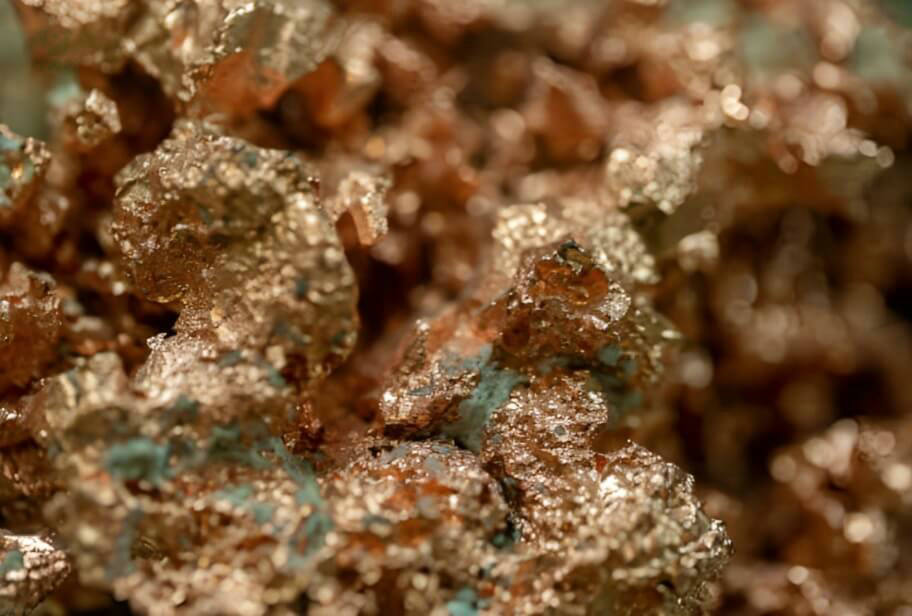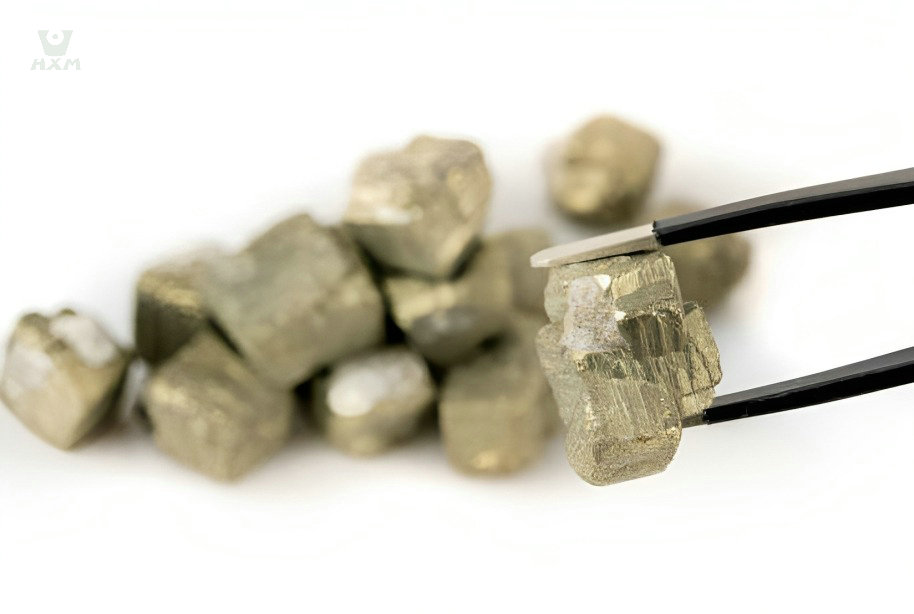In today’s world, where health and safety concerns are paramount, it is natural to question the potential hazards associated with the materials we encounter daily. One such material that often finds itself under scrutiny is carbon steel. Widely used in various industries and applications, carbon steel’s prevalence raises an important question: is carbon steel toxic? As an alloy composed primarily of iron and carbon, carbon steel’s properties and composition determine its potential toxicity. To address this topic thoroughly, we will delve into the nature of carbon steel, examining its components, manufacturing processes, and any potential health risks associated with its use. By exploring scientific research and considering expert insights, we aim to shed light on the safety aspects of carbon steel and provide a clearer understanding of its potential toxicity, if any. So, let us embark on this journey, exploring the facts and dispelling any misconceptions surrounding the toxicity of carbon steel, empowering you with the knowledge to make informed decisions regarding its use in everyday life.
is carbon steel toxic?
Carbon steel is generally considered non-toxic and safe for everyday use. The composition of carbon steel, primarily consisting of iron and carbon, does not pose inherent toxic risks. Iron is an essential element in the human body, necessary for various physiological functions. Carbon, in its elemental form, is also non-toxic. However, it is crucial to note that carbon steel may contain trace amounts of impurities, such as sulfur, phosphorus, or heavy metals, depending on its specific composition and manufacturing process. These impurities, if present in significant quantities, can potentially pose health risks. However, strict regulations and quality control measures in the production of carbon steel ensure that the levels of impurities are kept within safe limits.
As we have established that carbon steel is generally considered safe and non-toxic, it is important to delve deeper into specific aspects to provide a comprehensive understanding. In the following sections, we will explore the potential health risks associated with impurities in carbon steel, the importance of proper handling and usage, and the regulatory measures in place to ensure its safety. By examining scientific research, industry standards, and expert opinions, carbon steel manufacturers aim to address any concerns and provide clarity on the topic of carbon steel toxicity. It is essential to equip ourselves with accurate knowledge and make informed decisions to ensure our well-being. So, let us continue this exploration, diving into the details and unraveling the nuances of carbon steel’s safety profile, ultimately guiding us toward a better understanding of its potential impact on our health.
What is Carbon Steel?
Carbon steel is a type of steel that primarily consists of iron and carbon. It is an alloy where carbon content is the principal determining factor in its properties. Generally, carbon steel contains a carbon percentage ranging from 0.05% to 2.0%, although the specific composition may vary.
Definition of Carbon Steel
Carbon steel is a type of steel that primarily consists of iron and carbon. It is an alloy where carbon content is the principal determining factor in its properties. Generally, carbon steel contains a carbon percentage ranging from 0.05% to 2.0%, although the specific composition may vary.
Composition of Carbon Steel
Carbon steel is primarily composed of iron and carbon, with trace amounts of other elements. The specific composition may vary depending on the desired properties and intended applications. The presence of carbon is crucial in determining the characteristics of carbon steel, as it directly affects its strength, hardness, and machinability.
Apart from iron and carbon, carbon steel may contain small amounts of other elements, such as manganese, silicon, sulfur, and phosphorus. These elements are often considered impurities, but they can have a significant impact on the steel’s properties. For example, manganese enhances strength and hardenability, while silicon improves resistance to oxidation and corrosion. Sulfur and phosphorus, although undesirable in large amounts, can improve machinability when present in limited quantities.
The precise composition of carbon steel is carefully controlled during the manufacturing process to ensure consistent quality and performance. By tailoring the composition of carbon steel, carbon steel manufacturers can produce a wide range of grades with varying mechanical properties, making it a versatile and adaptable material for numerous applications.
Carbon steel is classified into various types based on its carbon content and other alloying elements. These types differ in their properties, strengths, and suitability for specific applications. Here are some common types of carbon steel:
Types of Carbon Steel
Also known as mild steel, low carbon steel contains a relatively low carbon content, typically ranging from 0.05% to 0.30%. It offers excellent weldability, formability, and machinability. Low-carbon steel is commonly used in construction, automotive components, and general fabrication.
With a carbon content ranging from 0.30% to 0.60%, medium carbon steel provides higher strength and hardness compared to low carbon steel. It is often used in machinery parts, axles, and gears that require increased durability and wear resistance.
High carbon steel contains a higher carbon content, typically ranging from 0.60% to 1.0%. It exhibits exceptional strength and hardness, making it suitable for applications such as cutting tools, springs, and high-strength wires.
With a carbon content exceeding 1.0%, ultra-high carbon steel offers extreme hardness and wear resistance. It is used in specialized applications such as knives and blades.
The choice of carbon steel type depends on the desired mechanical properties and the specific requirements of the application. Carbon steel manufacturers carefully select the appropriate type of carbon steel to achieve the desired performance characteristics for different industries and products.
Potential Health Risks
While carbon steel is widely used and generally considered safe, it is essential to explore the potential health risks associated with its impurities. Carbon steel may contain trace amounts of impurities that can vary based on its composition and manufacturing process. Understanding these impurities and their potential effects on human health is crucial for ensuring safe handling and usage of carbon steel.
Examination of Impurities in Carbon Steel
Carbon steel, despite its widespread use and favorable properties, can contain trace impurities that may have implications for human health. These impurities can originate from various sources, such as raw materials, additives, or contaminants introduced during the manufacturing process. It is crucial to examine these impurities to assess their potential risks accurately.
During the production of carbon steel, impurities such as sulfur, phosphorus, silicon, manganese, and small quantities of heavy metals like lead or chromium can be present. The concentration levels of these impurities can vary based on the specific composition and manufacturing practices employed.
Identification of Potentially Toxic Elements and Their Sources
To assess the potential health risks associated with carbon steel, it is essential to identify the potentially toxic elements that can be present as impurities. While carbon steel itself is generally non-toxic, certain impurities, if present in significant amounts, can pose health hazards. These impurities can originate from various sources within the manufacturing process.
Common potentially toxic elements found in carbon steel include lead, chromium, and other heavy metals. Lead can be present as an impurity in raw materials, while chromium can be introduced through alloying elements or surface treatments. Other heavy metals, such as cadmium or nickel, may also be present in trace amounts depending on the specific manufacturing process or contamination sources.
These potentially toxic elements have well-documented health risks. Lead, for example, can affect the nervous system, kidneys, and other organs, while certain forms of chromium can be carcinogenic. It is important to note that the health risks depend on the concentration levels, exposure duration, and specific forms of these elements.
Identifying the sources of these potentially toxic elements is crucial for implementing appropriate safety measures in handling and using carbon steel. Carbon steel manufacturers employ quality control measures and adhere to regulatory standards to minimize impurity levels and ensure product safety.
Discussion of the Health Risks Associated with These Impurities
When considering the health risks associated with impurities in carbon steel, it is crucial to understand the potential implications of these elements on human well-being. While carbon steel itself is generally considered safe, the presence of certain impurities can pose health hazards if present in significant quantities.
Lead, for example, is a well-known toxic element that can affect multiple organ systems, including the nervous system, kidneys, and cardiovascular system. Prolonged exposure to elevated levels of lead can lead to developmental issues, cognitive impairments, and other serious health conditions.
Chromium, particularly in certain forms such as hexavalent chromium, is recognized as a potential carcinogen. Prolonged inhalation or ingestion of high levels of hexavalent chromium can increase the risk of lung cancer, respiratory ailments, and other adverse health effects.
The health risks associated with these impurities in carbon steel are dependent on several factors, including their concentration levels, exposure duration, and specific forms. It is important to note that the impurity levels in carbon steel are regulated and monitored by manufacturers and governing bodies to ensure compliance with safety standards.
To mitigate potential health risks, carbon steel manufacturers’ practices focus on controlling impurity levels through stringent quality control measures and adherence to regulatory guidelines. It is crucial for individuals working with carbon steel to follow proper handling and safety protocols, including wearing appropriate personal protective equipment and ensuring adequate ventilation in workspaces.
By understanding the health risks associated with impurities in carbon steel, individuals can make informed decisions and take necessary precautions to minimize potential exposures. It is recommended to consult relevant safety guidelines, adhere to industry best practices, and consult with carbon steel manufacturers or experts to ensure the safe handling and use of carbon steel in various applications.
Expert Insights and Scientific Research
Scientific studies investigating the toxicity of carbon steel have revealed important findings. Researchers have conducted various experiments, including in vitro studies and animal models, to assess the potential health risks associated with exposure to carbon steel and its components. These studies have explored the effects of different forms of carbon steel, such as dust, particles, or fumes, on human health. Findings indicate that certain impurities present in carbon steel, such as lead or chromium, can pose potential health hazards if present in significant quantities. Concentration levels, exposure duration, and specific forms of these impurities are crucial factors in determining their potential effects on human health.
Expert Opinions and Perspectives
Carbon steel itself is generally considered safe for most applications: Experts generally agree that carbon steel, in its pure form, is not inherently toxic and is widely used in various industries without significant health risks.
- Impurities present in carbon steel can pose potential health hazards: Experts have identified that the presence of certain impurities in carbon steel, such as lead or chromium, can increase the potential for health risks. The concentration levels, exposure duration, and specific forms of these impurities are crucial factors in assessing their toxicity.
- Regulatory guidelines and industry practices aim to minimize impurities: Regulatory standards and industry best practices are in place to regulate the production and use of carbon steel, ensuring that impurity levels are kept within acceptable limits to minimize potential health risks.
- Proper handling and usage practices are essential: Experts emphasize the importance of following proper safety protocols, including using personal protective equipment, implementing ventilation systems, and maintaining good hygiene when working with carbon steel. These practices help minimize potential exposure to impurities and ensure safe usage.
- Ongoing research is necessary to further our understanding: Experts acknowledge the need for continued research to expand our knowledge of the potential health risks associated with carbon steel. Ongoing studies contribute to a more comprehensive understanding of the toxicity profile of carbon steel and guide the development of safety guidelines and practices.
It is crucial to note that the specific conclusions and findings may vary based on the impurities present, concentration levels, exposure scenarios, and individual research studies. Consulting with experts or carbon steel manufacturers and staying updated on the latest research can provide a more detailed and nuanced understanding of the potential toxicity of carbon steel.
conclusion
Throughout this exploration, we have examined scientific studies, expert opinions, and research findings regarding the potential toxicity of carbon steel. We have considered factors such as impurities, exposure pathways, and concentration levels to assess the associated health risks.
Based on the current understanding, carbon steel itself is generally considered safe for most applications. However, the presence of impurities, particularly heavy metals, can introduce potential health hazards if present in significant quantities. Adherence to regulatory guidelines and industry best practices ensures the safe usage of carbon steel.
To work with carbon steel safely, it is crucial to make informed decisions based on scientific research, expert insights, and safety guidelines. Carbon steel manufacturers play a pivotal role in ensuring the quality and compliance of their products with regulatory standards. By following proper safety protocols, including the use of personal protective equipment and implementing ventilation systems, individuals and organizations can mitigate potential health risks associated with carbon steel.
In conclusion, carbon steel is generally considered safe for use in various applications. However, the presence of impurities highlights the importance of responsible handling and adherence to safety guidelines. By staying informed, utilizing appropriate safety measures, and working closely with carbon steel manufacturers, we can ensure the safe and effective utilization of carbon steel in diverse industries.







